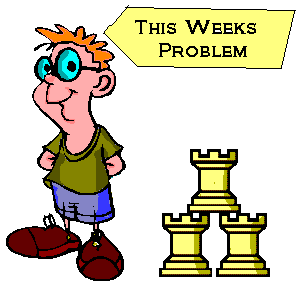
On the 21st December 1983 Garry Kasparov gave a simultaneous display
against ten junior players at the London headquarters of Acorn computers.
This was not your usual board and pieces affair, it was a computer simul.
Each player had a BBC computer running an Acorn chess playing program.
The juniors keyed in their moves and Gary would appear to key in his reply.

Sounds novel, and at that time it was. There were however a few glitches.
The juniors, had black on all boards (actually purple - see below) but the
screen would only show white at the bottom of the screen so the juniors
were playing ‘upside down’ on a computer screen, some perhaps for the
first time (apparently none of them knew that they would be playing on
a computer) and though innovative it must have been odd and distracting.

Some of the players complained that the non-changeable colour scheme
of the board and pieces gave them splitting headaches and eye strain.
One of players, Susan Walker, actually fainted and had to be replaced.

Another incident involved Neil Dickenson who made a move which lost a piece.
When Gary came to his board...sorry, computer, he could see it was a genuine
blunder and wanted to let Neil take his move back but Gary could not figure
out how to do this. So Gary went off to find the event organiser, Eric Schiller.

Whilst Gary was off looking for help a kibitzer pointed out to Neil that although he
was losing a piece there was a counter trick on and Black could win the piece back.
(remember this was a an experimental simultaneous, not to be taken too seriously.)

Eventually Gary returned with technical help only to find his opponent had waived
off Gary’s sporting gesture and wanted to play on. To my great shame I have been
unable to find the position in question. I can however reveal that Kasparov won.
Although it was billed as Kasparov v the juniors, Gary was only 20 and had just
beaten Korchnoi in a World Championship Candidates match. The final overall
score was 6-4 ( 4 wins, 4 draws and 2 losses.) and here we must remember the
rather unique circumstances and interruptions. The Report does mention that the
result would have included more Gary wins had they played on standard chess sets.
This game from the simul shows that Stuart Conquest seems to have adapted to the
screen and other distractions better than the host, Gary’s play is barely recognisable.
G. Kasparov - S, Conquest, simultaneous display, London, 1983


I’ll stay with the 5.b6 move in the Benko. I thought I had discovered an opening trap
in this line but I was 8 years too late. carpmaniac71 - pulga RHP 2012 beat me to it.
There are over 1,500 RHP cases where a Knight on e4 has been picked up by Qa4+.
The one that ‘almost everyone’ knows comes from the c3 Sicilian.
1.e4 c5 2.Nf3 d6 3.c3 Nf6 4.Be2
Black takes the e4 pawn 4...Nxe4 and 5.Qa4+ picks up the Knight.
However the Philidor. 1.e4 e5 2.Nf3 d6 using the e4 pawn as bait picks up the most victims.
AUGUST28 - jimm619 RHP 2019


Staying with Pal Benko let us look at one his studies.
White to play and win.
You have to avoid all the attempts at stalemate by Black.
Of course being three pawns up in a Rook ending does not guarantee
a win here at Red Hot Pawn. In fact you could say it is a disadvantage.
CraigSankyo - Mosermoser RHP 2012
Next, in the space of four moves White loses two pawns and a Rook
Settle back in your chair as we witness and feel the gleeful dismay of;
benjamind - Nick Brown 2 RHP 2019


You now are thinking ‘I bet the unimaginative swine uses a Pal Benko Problem.’ Correct!
Chess columnists copy and disgorge from each other. I’m no exception,
except I usually admit it and then try to add in a little piece of originality.
The problem Benko showed Fischer (and Fischer failed to solve) has gone around the
globe in all directions North, South, East, West and was last seen heading towards Mars.
I never shake my head in disappointment when I see it re-used. My sympathy lay with
the poor tormented writer struggling to reach a by-line. So here it is - with the solution.

White to play and mate in three moves. P. Benko 1944.
The hard to find first move is 1.Bc4. Fischer, apparently, gave up after 15-30 minutes.
1...Kf5 2.Qh5+ Ke4 3.Qd5 mate.
1...Ke5 2.Qd5+ Kf6 3. Qg5 mate.
So if I take the same pieces and juggle them about it a bit. We have a Benko Mark II.
White to play and mate in two. (not a new problem, simply an infant of the original.)
The Clue:
Only one solution and the first move is not a check.
Solution:
1.Kf2 Kf4 2.Qg4 mate
Have you ever lay awake at night wondering if anybody on RHP has ever stalemated
their opponent with the ‘Benko Pieces’ A Queen and two Bishops against a lone King.
I do and when sleep eventually comes it is in the shape of terrifying chess nightmares.
Wissie - Thijseboy RHP 2011
White has mate in two 63. Bb2+ or 63. Qh6+ instead White found 63. Qg6 stalemate.
The thread accompanying this blog is Thread 186066

